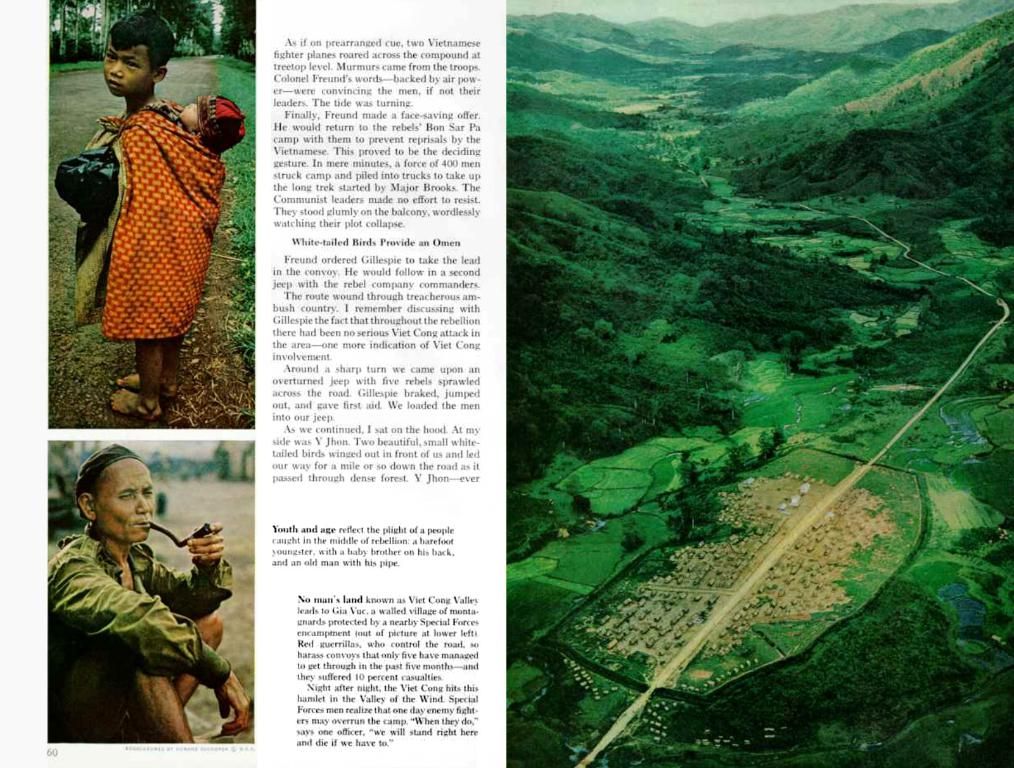Urban Transformer Balin Koyunoglu: Fostering Resilient Cities via Natural Rebirth
In today's bustling world, the environment takes a beating as cities expand and consume natural habitats. This encroachment, in turn, affects wildlife and damages the delicate equilibrium of ecosystems. By embracing rewilding, we can undo some of these negative impacts. Here's a look at why cities should welcome wildlife and how to make it happen with the help of landscape architect Balin Koyunoglu.
Referring to the delicate balance between urbanization and nature, Balin highlights the importance of preserving and enhancing natural habitats within cities. Reintroducing wildlife can be more than just adding big creatures like wolves or beavers into the wilderness. Even the tiniest pollinators like bees and the most colossal trees have a place in urban landscapes.
With the European Commission reporting that as much as 15% of urban areas could cater to blue (water) and green (vegetation) infrastructure, creating and linking wildlife habitats becomes a viable option. But for animals to thrive, they require safe spaces to live, move, feed, and reproduce. Balin explains that as landscape architects, we must prioritize healthy soil, the right key species, water sources, and habitats connected through corridors.
While soil and water often exist in urban areas, they may have become polluted, cut-off, or buried. Rewilding requires us to rejuvenate and clean these essential elements to restore a habitat for wildlife. Balin's work in this sector is groundbreaking, particularly in her native Turkey, where rewilding is still relatively new. Before becoming a landscape designer, Balin studied ecological design and urban conservation and has spent more than a decade working on eco-sensitive projects across various corporate and public clients.
For Balin, cultivating a connection between humans, nature, and cityscapes is crucial. Nature is integral to city life, and we need a harmonious coexistence to remain productive and resilient. Balin's Istanbul-based landscape design agency, Öteki Yer, reflects this vision by prioritizing the conservation and integration of hundreds of endemic species into urban environments in the Mediterranean region.
Changing people's minds about nature is a challenge, Balin acknowledges. Many urban dwellers have grown disconnected from their natural surroundings, making it difficult to persuade them to protect it. Balin suggests approaching the issue on two scales: micro and macro.
At the local level, persuading stakeholders for smaller rewilding projects can be manageable if you communicate effectively and help people reconnect with nature. Organize walks through forests, for example, and present designs that mimic the forest experience. Rewilding can be a bit untamed; it won't look like regimented public parks or gardens. As such, residents need to adapt to a different mindset. However, it can also provide an attractive space to enjoy the city's natural splendor.
Balin has created projects like a community garden that combines wild land rehabilitation with vegetable gardens and seating areas for leisure. By cleaning the site, restoring native vegetation, and introducing new species to diversify the ecosystem, she created a green corridor connecting the garden with a large natural olive tree forest and inviting wildlife to pass through.
Maintaining the long-term success of rewilded sites is essential. Balin emphasizes the importance of stewardship and engages communities in fun, educational activities to instill a love for nature and the responsibility to care for it.
At a macro scale, Balin recommends appealing to municipalities with the socio-economic benefits of rewilding. Rewilding contributes to achieving urban sustainability goals as it aids in CO2 absorption, improves mental health, provides shade, moderates temperature, reduces air and noise pollution, aids in stormwater management, and prevents flooding.
Rewilding efforts shouldn't be limited to specialists. Everyone can contribute by building balcony gardens with native species, starting rooftop gardens, or simply leaving part of their lawn or garden "wild" during the spring and summer months. By taking these small actions, a ripple effect can be created, transforming urban areas into thriving ecological havens that benefit both humans and wildlife.
In summary, rewilding plays a vital role in creating a harmonious and sustainable urban environment. By considering strategic planning, ecological measures, community engagement, and sustainable management practices, we can rejuvenate cities, enhance their beauty, and foster their resilience. Balin Koyunoglu, as a pioneer in rewilding, offers valuable insights and guidance for such transformative initiatives.
The landscape architect Balin Koyunoglu emphasizes the significance of incorporating wildlife habitats within cities for a harmonious coexistence between humans, nature, and cityscapes. To achieve this, Balin advocates for prioritizing healthy soil, key species, water sources, and connected habitats in urban designs.
Balin suggests tackling the challenge of changing people's perceptions about nature on two scales: at the local level, promoting rewilding projects through effective communication and reconnecting people with their natural surroundings, and at the macro scale, appealing to municipalities with the socio-economic benefits of rewilding, such as improved mental health, CO2 absorption, and stormwater management.
Everyone can contribute to rewilding efforts by implementing simple actions like creating balcony gardens with native species, starting rooftop gardens, or leaving part of their lawn or garden "wild" during the spring and summer months. By taking these small steps, individuals can help transform urban areas into thriving ecological havens that benefit both humans and wildlife.








